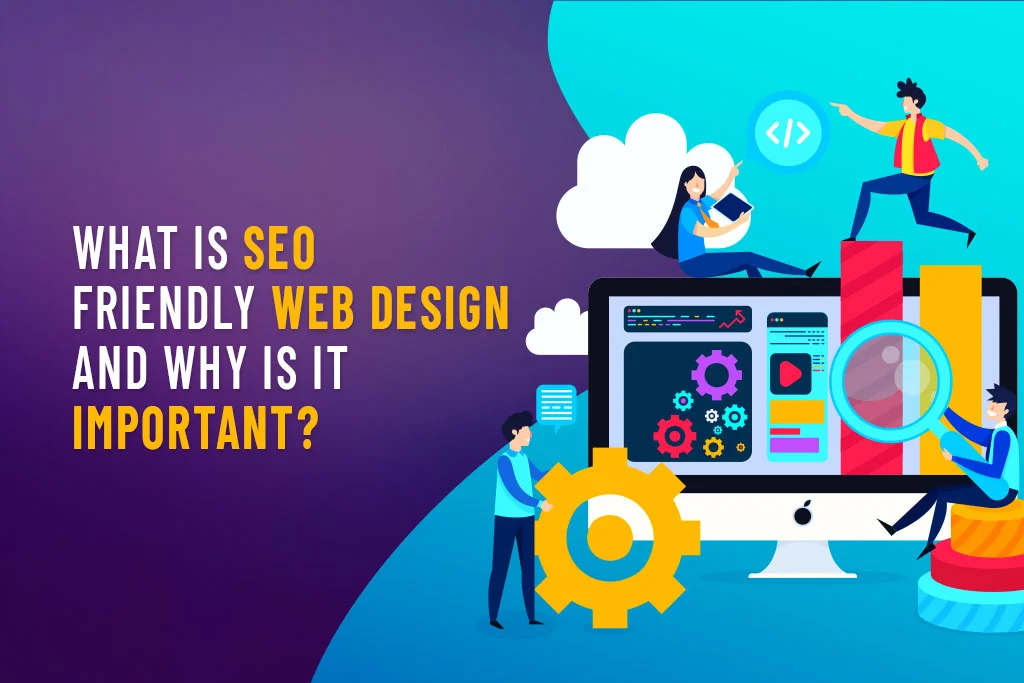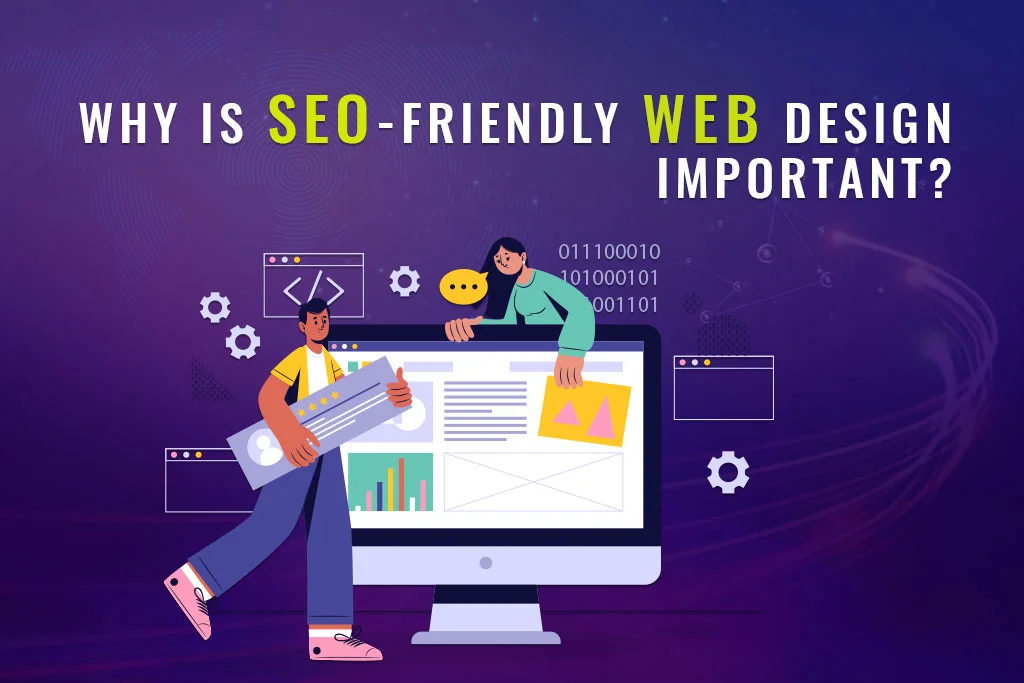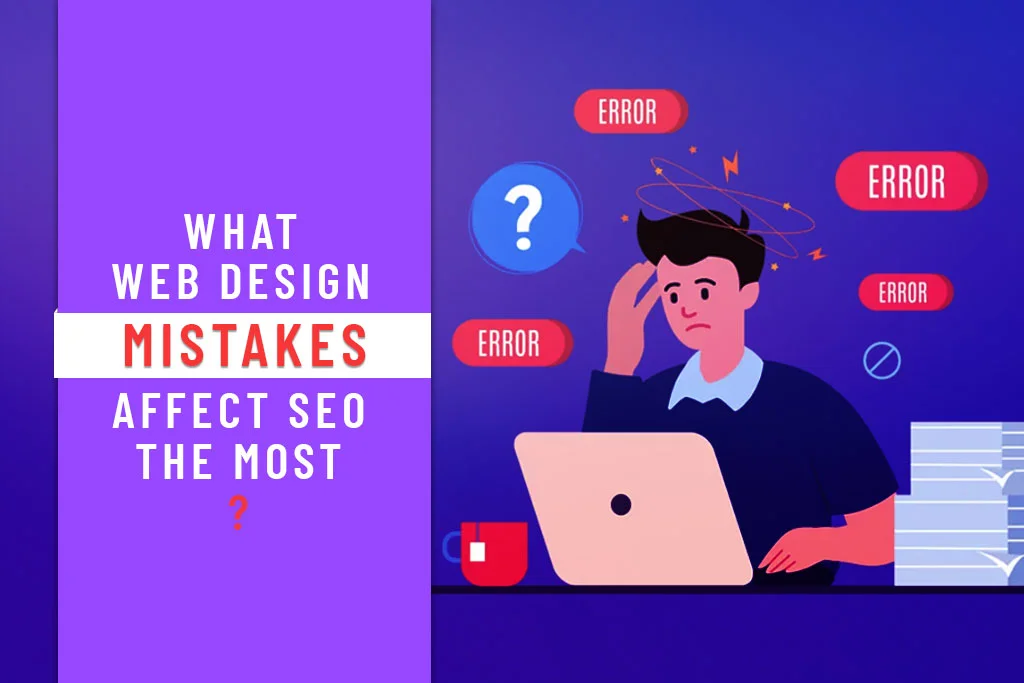What is SEO-Friendly Web Design And Why is It Important?

Do you want to know how SEO-Friendly Web Design can boost your website? We have got you covered. SEO-Friendly Web Design creates websites that search engines easily understand and index. They enhance a website’s structure, content, and layout to maximise its visibility in search engine results.
SEO-friendly design helps clients find their website when they search online using relevant keywords, descriptive titles, and meta tags. It also focuses on rapid loading times, and mobile responsiveness. It also focuses on straightforward navigation to improve user experience and engagement. Finally, Web Design helps organic visitors to your website and improves its overall performance in search engine rankings.
In this blog, we will discuss why SEO-Friendly Web Design services are important in Texas. We know about its benefits. Here, we will give you a complete guide:
What Is SEO-Friendly Web Design?
SEO-friendly Web Design creates websites that search engines like Google can easily understand and rank. This involves putting strategies into practice such as speed optimization, informative URL creation, and header-based content architecture to enhance accessibility and indexability. The ultimate goal is to improve your website’s contact and rating in search engine results. They make it easy for search engines to explore and understand the material on your website. You can bring in more visitors and raise the possibility that a larger audience will find and visit your website by using techniques of SEO-friendly Web Design.
Why Is SEO-Friendly Web Design Important?

If your website is not SEO-friendly, you risk losing potential visitors. We had like to explain some of the advantages of using an SEO-friendly solution for your business’s websites:
Visibility And Ranking:
Using SEO, raises a website’s position in search engine results. It increases its visibility to potential customers. The website’s chances of contacting potential clients increase as it improves search results and attracts more organic traffic. The site receives more traffic as a result of this enhanced visibility. Due to that visibility, it also increases brand exposure and creates more chances for interaction and conversion.
Increased Organic Traffic:
The main advantage of SEO is that it helps any organization generate organic visitors. An SEO-friendly website improves your organic traffic by putting you higher in the search engine results pages. These visitors are not only a great fit for your business, but they also have a higher conversion rate than traffic from other sources because they found you through a search linked to your content.
Credibility and Trust:
Brand credibility and trust-building are essential aspects in achieving company success. Brands that rank high on major search engines such as Google and Bing. They are often chosen by clients, highlighting the value of being seen on these sites. As a result, you need to spend money on a website that is optimised for search engines and can rank on the first page.
User-Experience:
SEO improves a website’s access and user experience at the same time. It enhances elements such as navigation, content importance, and site structure. We make it easier for users to locate what they’re looking for. It raises user satisfaction and engagement. By ensuring that the website is appealing to both human users and search engine algorithms. This optimization improves the user experience for everyone.
Competitive Advantage:
In today’s internet environment, having an SEO-friendly website is essential for maintaining your market position. It ensures that your website ranks high in search engine results. It allows your company to fight efficiently with competitors in your field. This visibility keeps you competitive in the face of intense competition and draws in new clients. You may keep up with the times and make sure your company doesn’t fall behind in the digital era. And make sure your website is optimised for search engines.
Global Reach:
By allowing your website to rank highly in search engine results globally, an SEO-friendly website creates prospects for a worldwide audience. From a wider range of geographical areas, this improved visibility brings more visitors to your website. You can effectively reach and engage with audiences worldwide by ensuring your website is optimised for search engine optimization. This will increase the global footprint of your business and maximise its potential for growth and success.
How SEO-Friendly Web Design Benefits Your Business?

In this high business world, every organisation tries to beat its competitors. Nowadays, developing a consumer-focused website that has been designed for search engines. Companies whose websites rank highly in linked online searches see an increase in website traffic. Potential customers won’t see your website if it is tough to find through an internet search. These potential customers aren’t aware that your brand exists unless they look it up.
Thus, using SEO services is essential when building a website. It can help a business become visible to its target audience online and start making money. A business must stay one step ahead of the competition in the market by developing an SEO-friendly website. All B2C and B2B groups must have an SEO-friendly website design. To have both short-term and long-term success, they try to bring in potential clients.
What Web Design Mistakes Affect SEO The Most?

Let’s examine the Web Design mistakes that can destroy the position of your company in search results after learning the benefits of mixing both elements and knowing the basis of this combination:
SEO-Friendly Web Design:
High-quality images are an essential component of good design. If they have a very high resolution, they can affect how quickly your site loads. A user will hardly tolerate a page taking longer than a few seconds to open. It will be even longer if they are using it from a mobile device. Since Google considers a site’s loading speed to be a ranking factor. It is important to pay attention to the size of your images to avoid making your web pages drag.
Publish Bad Content:
Although the content might be related to design and development, we continue to keep in mind that specific design elements may make it harder for users to interact with it. Search engines can identify factors such as extremely large paragraphs and phrases, small font, and text color that make reading difficult.
Add Excessive Javascript Calls:
There are a ton of scripts available online that can be used to enhance webpages by adding new features or by using the integrated capability to incorporate material from other sources. The issue is that loading times might be slowed down by requesting a lot of external resources, which is bad for SEO and user experience. Given this, use third-party script calls slowly while developing websites. Examine whether they are necessary or if alternative solutions may be employed.
Ignore Mobile Device Users:
As mentioned before, there has been a clear increase in the number of connections made via tablets and smartphones. This means that the majority of visitors to your website will probably come from these devices. If your pages are not optimised for these devices, visitors will most likely leave your site. Additionally, search engines use a website’s mobile friendliness to determine its ranking. It makes sense to invest in responsive design from an SEO perspective. And relating to mobile, don’t forget to include some social media share buttons on your page.
Replace Important HTML Elements With Images:
Even while it can seem great. Just replacing eye-catching graphics with essential HTML elements like header tags will not help with SEO. The H1, H2, and H3 tags let you emphasise the keyword for that page more strongly and show how relevant each section of your SEO material is.
Add A Lot Of Text To Images:
Search engines are not able to decode photos in the same manner that they do textual content. It is a component of the HTML code of the page. Because of this, it is not a good idea to have images that are mainly made up of text. Instead of duplicating the text with real textual components on the page. It is best to enhance text or maintain a separate image and text. Even though the alt text feature can be helpful in some situations. An approach would be to use CSS skills to build a text overlay layer.
Disregard Testing And Results:
Conducting research and analysing the findings is the best method to determine whether Web Design negatively impacts SEO. Adding tags to your data collection platform is an interesting step. Keep track of the date, whenever major site design changes happen. And see if there have been any notable shifts in organic traffic.
Conclusion:
SEO-friendly website design combines web development best practices with SEO strategies to produce attractive and clear websites that draw in natural search traffic. This strategy makes sure websites meet user needs. It interacts with its target audience successfully and builds a solid online presence in a crowded digital market. SEO-friendly development improves visibility and ranks in search results by optimising components like design, content, and usability for search engines.
In the end, this approach matches user intent with website objectives, resulting in higher traffic, happier users, and ongoing achievement in the world of the web. Media Eclips is the best SEO agency in Plano, Tx that provides you with the best services. In case of any information, you can make a consultation call with us.
FAQs:
How to check that My Website is SEO Friendly?
Examining your title tags, meta descriptions, and H1s is one of the simplest ways to determine whether or not your website is SEO optimised. Keywords that you want your page to rank for should be included in the title, description, and headers of each page.
What are SEO-friendly applications?
A smartly designed online application that complies with search engines’ algorithms and ranking criteria is known as an SEO-friendly website. It increases the application’s online presence, enhances its visibility, and ultimately attracts a more diverse and focused user base.
How much does it cost to rank a website?
Depending on the website’s size, industry competition, and ranking technique, there are wide variations in the cost of website ranking. In general, a more detailed campaign can cost anything from $2,000 to $10,000+ each month, while a basic campaign can start at about $500 per month.

